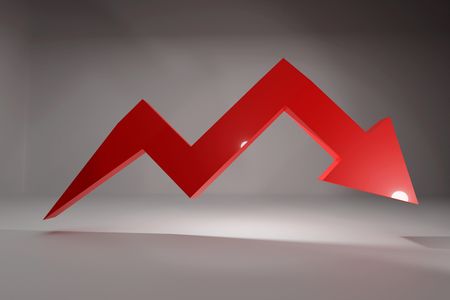The 7 Deadly Sins of Investing
Avoiding these common missteps will put you on the path to higher returns.

You’ve probably heard of the seven deadly sins. In traditional moral teachings, these transgressions -- wrath, greed, sloth, pride, lust, envy and gluttony -- are human tendencies that, if not overcome, can lead to other sins and a path straight to the netherworld.
In fact, the herd tends to gather the most strength right before the investment it is chasing goes off a cliff. Ill-timed moves in and out of funds, sectors and markets go a long way toward explaining why the performance of fund investors is decidedly poorer than the reported results of their funds. For example, over the past 15 years, investors in U.S. stock funds earned an average of 2.3 percentage points per year less than the funds themselves, says Morningstar.
Redemption: Follow rules, not herds, suggests Bill Allen, vice-president of the private client advisory group at Charles Schwab. These rules can be as simple as refusing to buy or sell in response to news reports, or making sure you invest the same amount every month no matter what the market is doing. Resisting the urge to follow the crowd can prevent you from committing the sin of buying high and selling low.

Sign up for Kiplinger’s Free E-Newsletters
Profit and prosper with the best of expert advice on investing, taxes, retirement, personal finance and more - straight to your e-mail.
Profit and prosper with the best of expert advice - straight to your e-mail.
2. Giving in to Fear
Avoiding losses is Warren Buffett’s first rule of investing. Since the 2008–09 stock market meltdown, however, many investors have taken the Oracle’s advice to an extreme and abandoned stocks for the seeming safety of such things as bonds, bank accounts and money market funds.
But what the typical investor sees as risk is merely volatility, normal day-to-day swings in the market. Although volatility can be frightening, the real danger lies in being too afraid of risk: You lose buying power -- permanently.
For example, suppose you invest in a Treasury security or bank account that pays 0.5% annually. With inflation at 2% today, you’ll actually lose 1.5% per year in buying power. The loss will be greater if inflation reverts to its long-term average of 3% per year. If inflation clocks in at its historical average, items that cost $1 today will be $2.43 in 30 years. But if you earn only 0.5% a year, you’ll have just $1.16 to pay for them. That’s a 52% loss in buying power.
Redemption: Put the stock market’s day-to-day volatility out of your mind and focus on the long term. Since 1926, U.S. stocks, as measured by Standard & Poor’s 500-stock index, have returned nearly 10% a year. Even if you had invested in the market at the March 2000
peak and held on through two horrific bear markets, you would have earned 3.4% annualized -- not great, but not disastrous, either. And if you had invested $3,000 on February 29, 2000, in Vanguard 500 Index fund, which tracks the S&P 500, and thereafter added $100 a month, your stake as of August 31 would have been worth $31,150 -- not bad, considering you invested a total of $19,200. In other words, the stock market is the place to invest your long-term money.
3. Hanging on Too Long
Knowing when to sell is hard. Don’t believe it? Ask yourself how many times you wanted to kick yourself for dumping a stock that went on to score big gains or for holding a stinker that continued to sink.
One reason selling is so tough is that you become psychologically invested in something once you buy it. If you own a winner, you may be reluctant to part with it because it’s been so good to you, so you hold on regardless of how overpriced it may be. If you own a lemon, you may not want to sell because doing so would leave a sour taste by confirming your stupidity.
Redemption: You need to have a sell strategy, says Jeff Saut, chief investment strategist at Raymond James Financial. For starters, be sure to review your investments at least once a year. If you own a stock, ask yourself whether, given all you know about the company, you’d buy it at today’s price. If not, consider selling all, or at least a portion, of the holding. You could base sell decisions on value-oriented measures. Start trimming a position if a stock approaches your price target or if its price-earnings ratio exceeds a predetermined benchmark -- say, the market’s P/E or the underlying company’s earnings-growth rate. Or consider using stop-loss orders, which trigger a sale when a stock’s price falls to a set threshold.
Fund investors must weigh other factors. The departure of a key manager can be a signal to sell. So can a change in a fund’s basic strategy. Investors need to be on the alert for asset bloat -- when a fund grows so large that it becomes too unwieldy to run efficiently. And if a fund consistently does worse than a key index or category average, it’s always a cause for concern -- although just about all funds go through tough stretches. (For more, see When to Sell a Mutual Fund.)
[page break]
4. Neglecting to Rebalance
One of the best ways to manage risk is to diversify: to own investments in a variety of categories, including domestic stocks, foreign stocks, bonds, and perhaps real estate and commodities, such as oil and precious metals. In building a well-diversified portfolio, you normally assign a weighting to each investment category -- for example, 50% in U.S. stocks, 30% in foreign stocks and 20% in bonds. The right mix is a function of your goals, time horizon and tolerance for risk.
But because the performance of different investments varies, a portfolio can quickly get out of balance. For example, say you have 50% in stocks and 50% in bonds, and over the course of 12 months, the stocks gain 20% while the bonds remain flat. You’ll end up with 55% in stocks and 45% in bonds. Likewise, if a single security doubles or triples in value, it’s likely to have far more weight in your portfolio than you originally intended. Letting a portfolio get too far out of whack increases risk and means your investments are less likely to adequately meet your goals, says Stuart Ritter, a financial planner with T. Rowe Price.
Redemption: Although it’s counterintuitive, the wise investor sells some winners and buys some of the losers at least once a year. This process, known as rebalancing, aims to keep your asset mix where you wanted it when you started. Rebalancing forces you to add to investments that are relative laggards and to sell those that are performing well relative to your other investments.
5. Making Things Complicated
It’s easy to get drunk on the wealth of choices available and end up with an unwieldy portfolio made up of scores of stocks and dozens of funds -- and maybe even some complex hybrid investments. Investors with such a wide array of holdings might think they’re well diversified and insulated from disasters. Unfortunately, they are more likely to be perplexed than protected. “A lot of people build a portfolio the way they collect things in their attic,” says Kinniry. “This looks good, that looks good, and they end up with a hodgepodge that doesn’t make much sense.”
In reality, the more securities you own, the more likely your portfolio will perform like an index fund, rising and falling in lock step with the market as a whole. And by building a vast portfolio piece by piece, you will increase your trading costs and be forced to follow and research more securities than your time, energy and ability permit.
One of Buffett’s dictums is to “never invest in a business you can’t understand.” Anyone who heeded the master’s simple advice would likely have been spared the pain of seeing the value of his collateralized mortgage obligations -- complex derivative securities -- collapse during the financial crisis. Most investors are better off staying away from options, principal-protected notes and funds, funds that seek to double or triple an index’s gains, and funds that track obscure volatility indexes.
Redemption: Make sure you understand how your investments work and why each is in your portfolio. Put the bulk of your long-term money in a handful of low-cost funds. You can create a portfolio with funds in the Kiplinger 25 (see Our 25 Favorite Mutual Funds, and Top Performing Mutual Funds tool). If you prefer index funds, see the portfolios in How to Pick the Best Index Funds. You can also buy funds that adjust their asset mix to become increasingly conservative as time goes on (see Pick the Best Target-Date Fund for You).
If you choose to own individual stocks, limit yourself to a relative few -- no more than 20 -- that you understand and feel comfortable tracking on a regular basis. And beware of derivatives, which Buffett has called “financial weapons of mass destruction.”
6. Paying Too Much in Fees
Unless you invest in Treasury bills, CDs and the like, you have no idea how an investment will perform in the future. The one thing you can control is expenses. The lower, the better.
Small differences in fees can have a big impact. Say you start with $10,000 and invest $500 a month for 30 years. If you invest in an index fund that charges just 0.2% each year and the fund returns 8% a year before fees, your account will grow to $818,639. If you buy a fund that charges 1.2% annually, however, you’ll net $662,916 -- almost $156,000 less.
Stock pickers should also pay attention to costs. Consider an active investor who makes one trade per week. If he uses a full-service broker, such as Merrill Lynch, and pays $75 per trade, he’ll pay $3,900 a year. The same moves made with a discount broker charging $10 per trade would cost $520 per year. Over 30 years, assuming that the savings are invested and earn 8% a year, the extra cost of the full-service broker would amount to $400,000.
Redemption: Stop looking at trading costs as one-time events, and recognize the long-term impact they can have on your portfolio. Trade sparingly and compare costs before you invest. (To learn about our favorite discount brokers, see The Best Online Brokers.)
7. Failing to Stick to a Plan
The greatest investment sin of them all is failing to formulate and follow a plan. After all, the main purpose of investing is to generate the wherewithal to get something, or many things, that you want in the future. Without a plan, it’s impossible to know whether you’re on the right track. “If you are not sure where you are going, any path—or no path—will get you there,” says T. Rowe Price’s Ritter. “You need to link your investments to a goal or a time horizon to know what steps to take to succeed.”
Moreover, having a plan lets you resist the other deadly sins, says Schwab’s Allen. “If you anchor on a plan, you are starting from a place of fact rather than feelings,” he says. That can help you know when to sell and when and how to rebalance, and it can give you strength to resist the pull of the herd.
Redemption: Start by jotting down your goals, from short-term wants, such as buying a house or a car, to long-term aims, such as paying for your kids’ college and financing a comfortable retirement. Determine the time horizon for each goal and estimate its cost. Then match short-term goals with short-term investments, such as bank accounts and Treasury bills. Match medium-term goals with somewhat more-aggressive investments, such as long-term CDs, intermediate-term bonds and a bit in stocks.
Finally, put your long-term investments in stocks and stock funds, both domestic and foreign. Check on your portfolio (and your financial plan) at least once a year to make sure that you’re still on track and that you like the direction you’re headed. (If you need help with setting goals or determining what they might cost, as well as with investing, check out Pick the Right Money Manager.)
Get Kiplinger Today newsletter — free
Profit and prosper with the best of Kiplinger's advice on investing, taxes, retirement, personal finance and much more. Delivered daily. Enter your email in the box and click Sign Me Up.

-
 Don’t Make These Five Mistakes on Your Tax Return
Don’t Make These Five Mistakes on Your Tax ReturnTax Filing The IRS warned taxpayers to watch out for these common errors as they prepare to file.
By Gabriella Cruz-Martínez Published
-
 Cooling February CPI Lifts Rate Cut Hopes: What the Experts Are Saying
Cooling February CPI Lifts Rate Cut Hopes: What the Experts Are SayingWhile the Fed is likely to keep interest rates unchanged next week, an encouraging February CPI report raises the odds for more easing later this year.
By Karee Venema Published
-
 Stock Market Today: Trump Drives Another Up-and-Down Day
Stock Market Today: Trump Drives Another Up-and-Down DayInvestors, traders and speculators as well as businesses and households continue to adjust to rapidly changing times.
By David Dittman Published
-
 Stock Market Today: Dow Off 890 Points on Tariff Uncertainty
Stock Market Today: Dow Off 890 Points on Tariff UncertaintyPresident Donald Trump still believes his ever-evolving plan for global trade will be "great for us," but "it takes a little time."
By David Dittman Published
-
 Stock Market Today: Stocks Swing Higher on Powell Speech
Stock Market Today: Stocks Swing Higher on Powell SpeechInvestors cheered after Fed Chair Powell repeated his confidence in the strength of the U.S. economy.
By Karee Venema Published
-
 Stock Market Today: Trump's Tariff Reversal Can't Save Stocks
Stock Market Today: Trump's Tariff Reversal Can't Save StocksPanic selling sent the Nasdaq Composite into correction territory, while the Dow and S&P 500 suffered notable losses.
By Karee Venema Published
-
 Stock Market Today: Dow Adds 485 Points After Trump's Tariff Delay
Stock Market Today: Dow Adds 485 Points After Trump's Tariff DelayThe White House said it will postpone tariffs on automotive imports from Canada and Mexico for one month.
By Karee Venema Published
-
 Stock Market Today: Dow Drops 670 Points on Trade War Effect
Stock Market Today: Dow Drops 670 Points on Trade War EffectA prodigious rally by the battered leader of the AI revolution typified an increasingly volatile picture for investors, traders and speculators.
By David Dittman Published
-
 Stock Market Today: Markets Count Down to Tariff Day
Stock Market Today: Markets Count Down to Tariff DayInvestors, traders and speculators stand by for updates from Washington, D.C., on new terms of global trade.
By David Dittman Published
-
 Stock Market Today: Stocks Recover From Trump-Zelensky Slide
Stock Market Today: Stocks Recover From Trump-Zelensky SlideReports of a combative meeting between the two leaders sent stocks temporarily lower Friday afternoon.
By Karee Venema Published